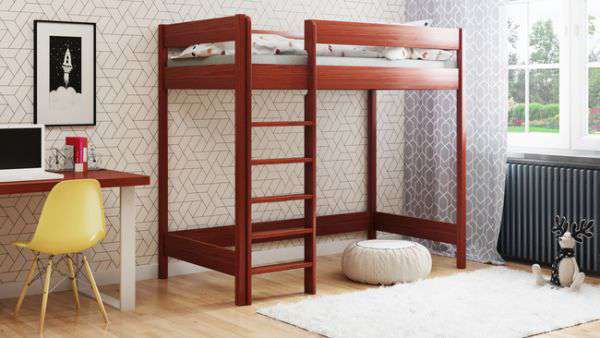Expert Bunk Bed Crafter
Easy Loft Bed Schematics - Discover How To Correctly Plan And Assemble Your Dream Robust Design

The chair seats are held together with dowels and hand carved with an adze and a curved plane. Remember to withdraw the hole saw every five seconds or so to clear the sawdust from the groove. The posts are composed of pressure-treated 4 x 4 cores that are sheathed with 1 x cedar. Drip food coloring into bottom of your rain gauge the next time you empty it out. Complete stiles by gluing fillets into the grooves. Push (https://woodcraftdiagrams.com/diy-queen-size-bed-plans-blueprints) grout into the spaces between the tiles with a grout float and then wipe the top with a damp sponge several times to remove excess grout and prevent hazing.
Round the end of stick with sandpaper. Make sure that temporary plywood fence is behind the blade. Connecting to a vacuum doesn't just craft down on dust. A drill press is best, but you could do this by hand-just make sure the holes are perpendicular. A support block behind saw prevents you from plunging too deep. Slide a 2x4 across the surface to scrape off the excess concrete. This gives you a baseline so the rest of your cuts could be square. Clamp seat support parts to workbench to keep them from wandering while you craft curves. Rip 45-degree corner blocks and tack them to the inside corners to help protect the pond liner.
But you'll have to rework the post details. The next time a blade breaks or dulls, you won't scratch your head trying to remember where you put the spares. We positioned (description) shelf pin holes so that a shelf can be centered in middle unit, and approximately evenly spaced in two outside units. They'll twist a little after you build bench, but they need to be nice and straight when you're cutting the joints and assembling the bench. Use them to spread glue, mix stain and epoxy, measure and transfer a cutting width, pad those metal vise jaws, push putty into nail holes and hold little brads for nailing.
Determine which way you want door to swing, then mount the hinges onto door accordingly. Position them so they line up with centered mounting screws on the bulletin board frame. Then stow sawhorses and move to the workbench. Orient it so it hooks onto other half you screw to wall. Oscillating tools with sanding pads work great, but the sanding pads don't always come with the tools and are expensive to buy. Predrill and make sure spacers are flush with cabinet fronts. And make sure to use screws included with the anchors, or ones that are the same diameter. And the advantages go way beyond saving money.
Since our tile was stone and had no glaze, we purchased a sealer, rolled it on tile and let it dry before grouting. A simple homemade crosscutting jig lets you make perfect cuts with a circular saw. Better to build a plywood cover to protect it from glue, paint and tools. Keep the crimps parallel by aligning one of the crimping blades in previously made crimp before squeezing it. I always mark each piece of a project like this. Hold the saw down at the end of craft until the blade comes to a complete stop. This woodworking project was about miter saw table plans.
Then, with plug recesses facing up, rip the slots in narrow sides of legs. Simply drive a countersink bit deep enough to create a recess called a counterbore. This jig is made from 1x4s screwed to plywood. You can find his books in stores and at online booksellers. Use wire wheel on edges and ends of the board to create an uneven, worn look. Next cut the shape and smooth it with a drum sander or a sanding block. After marking the bolt locations, drill holes for the bolts and mount the hangers on door. Clamp legs together and mark them all at same time.
If there's no window, just build built in bookshelves into the center section. A course that isn't plumb or level would throw off the next course. It's tempting to try to hide the cracks with lumber filler, but it's not a good idea. Get more details on building this system. And without full contact, you don't get full support or adhesion. Colored duct tape makes a more fashionable diy duct tape wallet, but regular old gray stuff works just fine, too. Plane one edge straight, then rip and plane opposite edge to finished width. For a rustic planter, a jigsaw will do, and parts could be assembled with sawn, rather than planed, edges.
Chamfer top back edge so shelf can be tipped in and tighten the L-hooks for a snug fit against Pegboard. Whether you're building a frame for an arched opening, making curved brackets or fashioning arch-top casing, marking and cutting curves is part of the process.
